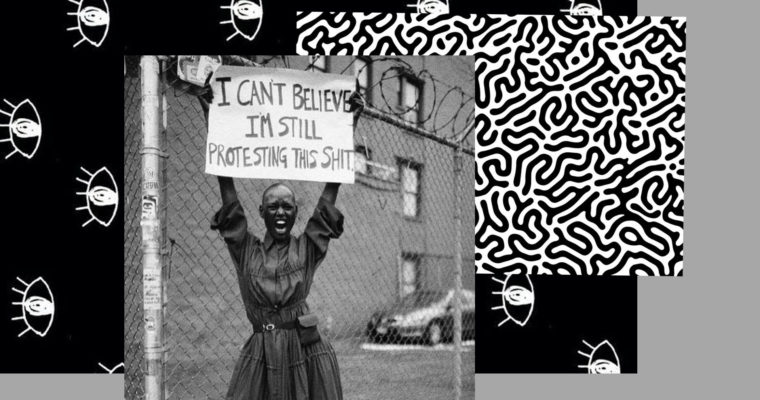
Nowadays under many reasons – the shift in social aspirations, the economic, environmental and social crisis – the fashion field can’t be separated from the society overall. As many sociologists have shown across a large literature, art in general is a product created by the society and used by it later. Howard Becker while analysing the ‘Art Worlds‘ noticed that it is a part of the social life, as it works on a specific system, established by the social actors of this world. Considering that fashion is manipulated by communities to stage their visions, we can totally understand the concept of using fashion as a tool to leverage one’s activism position. The social symbolism given to those simple garments is what defines clothing. According distinct codes, one is able to read the intention behind pieces. In practice this implies for fashion labels to take part in the social, political or environmental debate.
Adapted to marketing, this technique could be called: ‘the personification process‘. Although this concept already exists in the literature lexicon, I really think this is a relevant way to illustrate the process occurring in the communication strategies of those labels. Among this personification process, sub-categories are drawing a panel of opportunities for companies. Activism is one of the option you can rely on if you need to personify the image of your organisation. Nowadays we are witnessing a exponential use of this method to build a relevant message, even though this approach is not something new.
Using garments to protest is for sure an ancient phenomenon. Through history we can see that fashion has been used to stand against traditional social norms. While investigating the past, you can learn a lot from those groups that had used clothes to make things changed. One of the example I often refer to is the ‘Rational Dress Society‘. This organisation founded in 1881 in London stood against the traditional dress, meant to free the movement while wearing it. The Manifesto from this organisation was very clear about the need to avoid body damages:
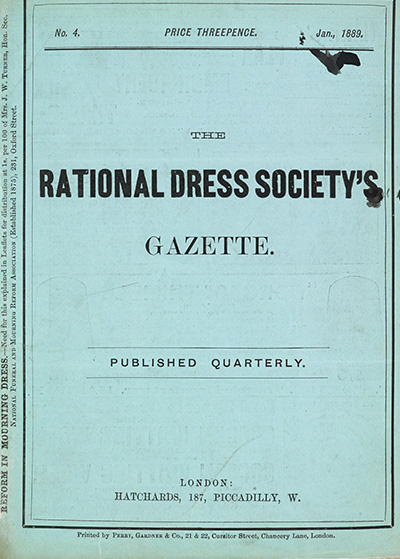
“The Rational Dress Society protests against the introduction of any fashion in dress that either deforms the figure, impedes the movements of the body, or in any way tends to injure the health. It protests against the wearing of tightly-fitting corsets; of high-heeled shoes; of heavily-weighted skirts, as rendering healthy exercise almost impossible; and of all tie down cloaks or other garments impeding on the movements of the arms”
More recently, many causes have been fought through garments. Social, political and environmental issues set the ton in the ultra modern age of fashion. In February 2017, Mara Hoffman clearly made her statement against Trump’s administration. In collaboration with the NYFW and The Co-founders of Women’s March, Hoffman began her show by delivering a speech about inclusivity and unity. While Hoffman’s actions are very honorable, some designers are mainly using T-shirt with protest messages write on it.
This simple T-shirt is what concerns me the most right now. Mara Hoffman is not the only one to use fashion as a way to spread a message. A few months ago, during its SS17 fashion show, Dior released a ‘We Should all be Feminist’ T-Shirt. It is funny to see that when you search for this item, you will find that it actually costs 660 US dollars. Isn’t it a high price to pay to eventually claim your vision on the matter? Overpriced important issues seems very amoral in times where the struggles are very vivid in the social life. Some will say that it is a way to bring awareness in the industry, but I will disagree by saying the only consequences is that this type of T-shirt devalues the importance of those struggles.
By making activism trendy, fashion labels are trying to democratise causes or messages. While the intention is very honorable, this normalisation process has deep impact on the cause, itself. By normalisation process I mean the social action by which new ways of thinking or organising are routinely incorporated in the daily life. Unfortunately, when at first sight it can appear as beneficial for the general order, when you look closely it actually often leads to extreme popularisation and a deep loss of its meaning. When a social fact is normalised, it is settled into the social scale and start to be established. The bright side of this phenomenon is the level of acceptance. However the dark side is clearly the stagnancy that often goes with this process. As if we stop taking action and think that simple T-shirt will help to resolve deeper problems.
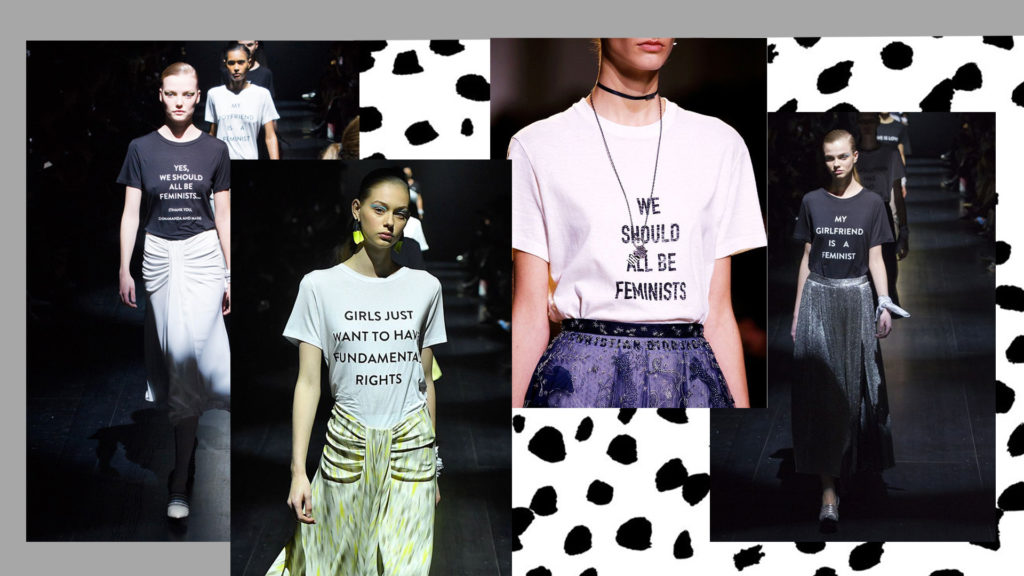
Popularisation clearly hides another issue which is the simplication of matters that are very complex and important – as they are trying to go against the entrenched order. Activism into the fashion industry is often the subject of a lack of proper actions. Every brands can claim their commitments, but being part of a real change requires deep organisational improvements. Simplifying the action by a T-shirt seems a little bit short. Also, popularisation can actually guide to misleading information. The limit underlined here is referring to the set of knowledge held by the general social psyche. Because of the media and the way information transit into the society, popularisation is equited to wrong information. An example to illustrate this flaw would be more relevant than a theoretical explanation. In the general psyche, African fashion can be resumed by one pattern: the wax – which is actually from Netherlands. It has been sold to the African community but it is not made by this community. While searching on African fashion, the results are quite predictable and not necessarily representative of what it actually is. Reducing the aesthetic to one motif that it not even made from the African communities is a problem on many levels. Nevertheless, the information to remember here is that the set of information held by people is wrong and lead to misconception.
While I can be very picky and pessimist when it comes to demonstration of activism into the fashion industry, I think it is important to underline actions that actually have a positive impact on the perceptions or in the field. In an article from Document Journal published in October 2019 and entitled ‘Thrifting as rebellion: How Gen Z killed fast-fashion‘ , Maraya Fisher explains that the younger generations are not ashamed of wearing secondhand clothes unlike older generations (Gen X for instance). Because of the climate crisis and environmental emergency, this generation is choosing to find their pleasure in existing garments by embracing the thrift culture. While fast-fashion designs can appear as impersonal and boring, secondhand clothes have a real and deep story. This kind of activism clearly has an impact as the fast-fashion segment is clearly losing market shares. At the end of 2019, ‘Forever 21 declared bankruptcy and announced that it will close up to 350 stores around the world and shutter operations in 40 countries‘ as written in Fisher’s article.
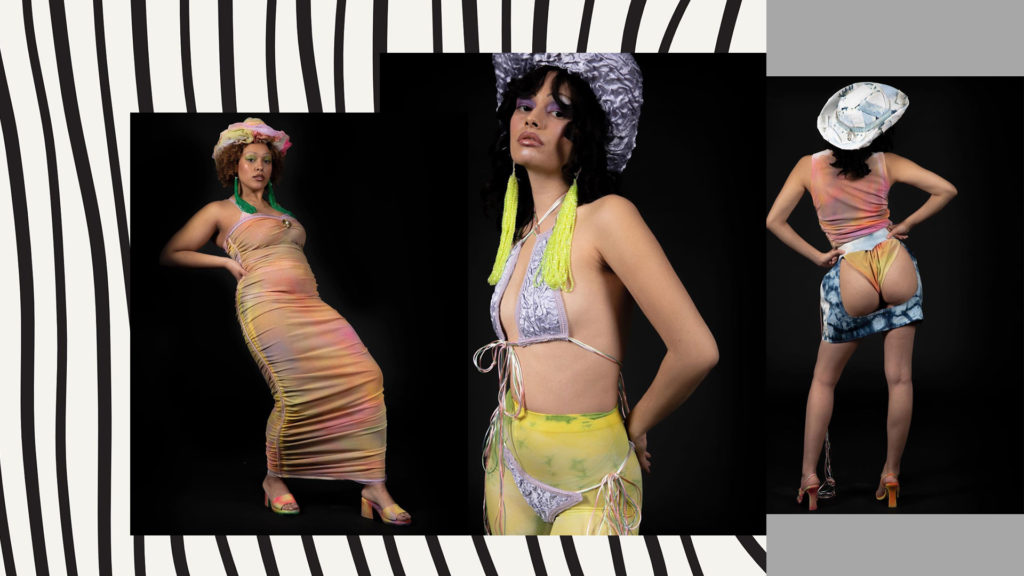
Shot by @ka.ven
HMUA @anitasanchezh @nevekerry
Model @l.aust
One of the countries concerned by these news is Canada. After spending quite some time in Montreal, the irrelevance of such companies in this country is totally making sense. The thrift culture there is well established and for many young creatives it has more value and charm than the offer proposed by fast-fashion brands. Young stylist and experimentalist based in Montreal Tishanna Carnevale knows well the idea of thrifting as rebellion and she even goes deeper when explaining what it really means to her:
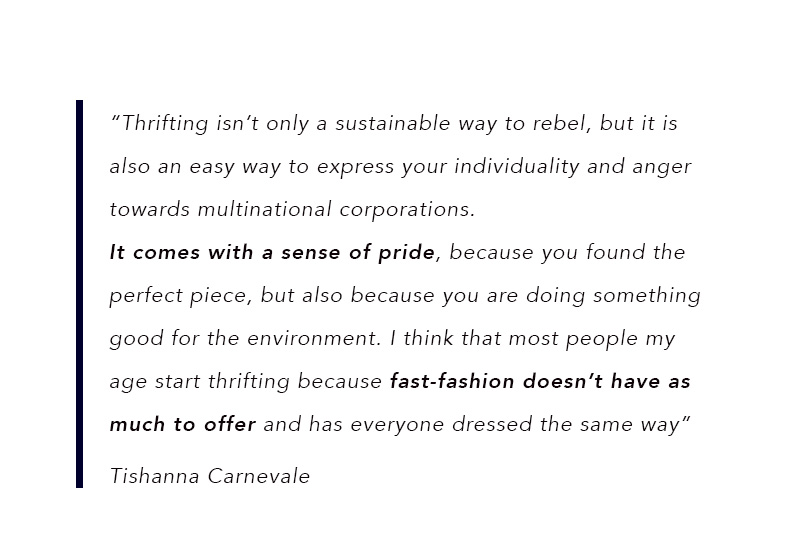
Here is an illustration of activism that actually has an impact on the market overall. This is not a T-shirt, just a pure and simple action that can change the deep order of the fashion system. The goal of this article is not to blame activism occurring in the industry. It is mostly to underline the danger of simplifying important causes to make them trendy. Of course, as everything in life, we can’t generalise. Some actors within the industry actually have an useful influence and truly help causes. Everything is a question of genuine commitment.


